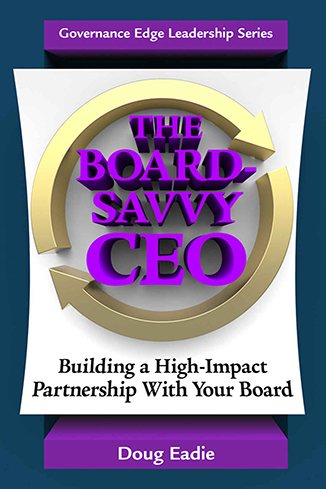 At the recent chief executive workshops I presented for the Florida and Virginia Societies of Association Executives, a very familiar question came up not long after we’d gotten underway, as it has in virtually every one of my workshops over the past 25 years: “What’s the right size for a nonprofit board?” I always respond by pointing out that there’s no “right” size for a board, but I don’t stop there, since I think the issue is high-stakes enough to merit serious discussion. And I’m very concerned that audience members understand the high cost of traveling the road of board downsizing without thinking through what they can lose while gaining precious little in return.
At the recent chief executive workshops I presented for the Florida and Virginia Societies of Association Executives, a very familiar question came up not long after we’d gotten underway, as it has in virtually every one of my workshops over the past 25 years: “What’s the right size for a nonprofit board?” I always respond by pointing out that there’s no “right” size for a board, but I don’t stop there, since I think the issue is high-stakes enough to merit serious discussion. And I’m very concerned that audience members understand the high cost of traveling the road of board downsizing without thinking through what they can lose while gaining precious little in return.
It might go without saying, but I’ll say it anyway: In a rapidly changing and ever more complex and challenging world, a highly diverse board – in terms of experience, expertise, access to funders, connections with key stakeholders, and such important symbolic factors as geographic location, gender, and race – is one of your most precious assets, in developing and executing change and growth strategies. In my experience, a board in the range of 20 to 30 members allows for a high degree of diversity, while a board of fewer than 15 members cannot possibly be diverse enough for the challenges you face in today’ world.
My response when one of my VSAE workshop participants pointed out that she’d just read an article about the virtues of board downsizing was “Caveat emptor!” Don’t believe everything you read or hear, I said, even if it’s assertively recommended (as much pretty wrong-headed advice often is). Instead, she and her CEO colleagues must for their own protection be cautious consumers of advice, carefully weighing costs and benefits before acting. In that regard, the case for board downsizing is stunningly weak: that a smaller board is easier to manage and culturally more cohesive. Maybe one or both assertions are true, but so what? In these challenging times, don’t you want as diverse a board as possible to help you grow your nonprofit?
As I told the group in Richmond, while a board of fifty might very well be too unwieldy, making meticulously managed downsizing a sensible course to follow, just make sure that in the process you don’t go too far and sacrifice too much experience, expertise, clout, connections, etc., to achieve a modest efficiency goal.
At the Florida workshop, we talked about a couple of very special CEO benefits of a larger, more diverse board. First, you’ll be able to make use of three or four full-fledged board committees, which will provide you with opportunities for the kind of intensive interaction that breeds a more solid working relationship. And second, it will be much harder for a relatively small group of board members gunning for you (5 of 9, for example) to send you packing.
Generally speaking, you should keep in mind that although nonprofit boards have been around for years, there isn’t a well-developed field called “nonprofit governance” with a set of universally accepted standards and preferred practices, so there’s always a good chance of getting bad advice. Again, for your own protection, follow the “caveat emptor” rule and don’t act on advice without a thorough analysis of benefits and costs.





